What Insects Live in a Bug Hotel? Meet The Tiny Guests Helping Your Garden Thrive
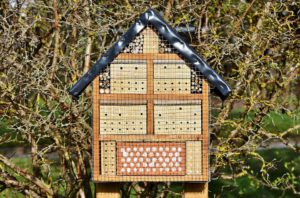
Ever wonder who checks in when you build a bug hotel? These charming little structures are more than just backyard decorations—they’re cozy homes for many helpful insects. If you’re new to the idea or curious about what tiny creatures you might attract, you’re in the right place!
In this post, we’ll explore what insects live in a bug hotel, why they’re important, and how you can attract the right guests. No matter if you’re a green-thumbed gardener, a curious parent, a creative teacher, or simply someone who loves the wonders of nature — this is the perfect place to spark ideas and bring your bug hotel to life with buzzing activity!.
What Is a Bug Hotel?
A bug hotel, also called an insect hotel or insect house, is a man-made beautiful designed structure that attract and shelter beneficial insects. These eco-friendly dwellings are typically made from natural materials like wood, bamboo, straw, bark, pinecones, and bricks.
They mimic the cracks, crevices, and holes insects would naturally hide in—offering shelter from rain, predators, and cold weather.
But what’s the point of attracting bugs, you ask?
Insects play a big role in your garden plant’s health. They pollinate flowers, control pests, and improve soil quality. Giving them a safe place to stay encourages a natural balance in your garden.
So, What Insects Live in a Bug Hotel?
A bug hotel will attract a variety of friendly and helpful garden insects. Here’s a list of the most common guests you might see moving in:
1. Ladybugs (Ladybirds)
Ladybugs are a gardener’s best friend. They feed on aphids and other plant-eating pests. In your bug hotel, they prefer spaces filled with bark, leaves, or dry grass.
2. Solitary Bees (Mason Bees, Leafcutter Bees)
Unlike honeybees, solitary bees don’t live in hives. They build their nest in holes in wood or bamboo. Mason bees are amazing pollinators—just a few can do the work of hundreds of honeybees!
3. Lacewings
These green insects lay their eggs near aphid colonies. Their larvae are fierce predators that gobble up aphids, thrips, and mites. Lacewings favorite dry straw or shredded paper tucked into your hotel.
4. Butterflies
Butterflies don’t usually stay for long, but they might take shelter during wind or rain. They prefer upright slots or narrow chambers protected from drafts.
5. Beetles
Ground beetles, rove beetles, and other species often hide in bug hotels during the day. They munch on slugs, caterpillars, and other pests. Beetles like the darker, damper bottom sections.
6. Hoverflies
Hoverflies look like small bees, but they’re harmless and excellent pollinators. Their larvae feed on aphids, making them great allies in pest control. They enjoy small crevices lined with dry plant stems.
7. Spiders
While not technically insects, spiders often take up residence in bug hotels. They help control flies, mosquitoes, and other insects by catching them in their webs.
8. Earwigs
These creepy-looking bugs might seem like bad news, but they’re helpful! They eat aphids and decaying plant matter. Fill a dark, moist section with corrugated cardboard to attract them.
9. Woodlice (Pillbugs)
These little crustaceans break down dead wood and leaves, returning nutrients to the soil. They prefer moist, shaded sections of your bug hotel with rotting wood.
10. Wasps (Solitary Varieties)
Some solitary wasps are actually beneficial. They help control caterpillars and grubs. These wasps won’t bother humans and often nest in small wooden holes.
Why These Insects Matter

It’s not just about attracting bugs—it’s about building a thriving, balanced ecosystem.
Here’s how they help:
-
Pollination: Bees, butterflies, and hoverflies help your garden bloom.
-
Pest control: Ladybugs, lacewings, spiders, and wasps reduce aphids, mites, and other nuisances.
-
Soil health: Beetles and woodlice break down organic matter, enriching the soil.
-
Education: Bug hotels are great for teaching kids about biodiversity and nature.
What Makes a Good Bug Hotel?
To attract a variety of insects, your bug hotel should offer:
-
Varied materials: Use bamboo, straw, bricks, leaves, pinecones, and logs.
-
Multiple chambers: Different species need different environments.
-
Dry conditions: Most insects prefer dry, sheltered nooks.
-
South-facing: Position your hotel to catch the morning sun.
-
Nearby plants: Add pollinator-friendly flowers to encourage visits.
Pro tip: Avoid treated wood or artificial materials. They can be harmful to insects.
What to Avoid
-
Pesticides near your bug hotel.
-
Constant disturbance—check occasionally, but don’t poke around too much.
-
Too much moisture, which can lead to mold or rot.
Best Places to Put Your Bug Hotel
Place your hotel:
-
In a sunny, sheltered location.
-
Near native plants, herbs, or vegetables.
-
Away from heavy foot traffic or pets.
-
Above ground, at least 12 inches off the soil.
You can attach it to a fence, hang it on a tree, or stand it on bricks or a post.
How to Maintain Your Bug Hotel
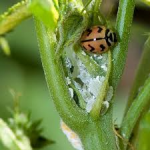
Bug hotels are mostly self-sustaining, but a little upkeep helps:
-
Clean in early spring, before guests return.
-
Remove moldy or wet materials.
-
Refill with fresh straw, bamboo, or bark as needed.
-
Avoid harsh cleaners—just brush and swap out old items.
With care, your bug hotel can last for years!
10 FAQs About What Insects Live in a Bug Hotel
1. Do bees really use bug hotels?
Yes! Especially solitary bees like mason bees and leafcutter bees. They lay their eggs in bamboo tubes or tiny holes in wood.
2. Are bug hotels safe to have around children?
Absolutely. Most of the insects are harmless. Just teach children to observe, not touch.
3. Can bug hotels attract pests?
Not typically. Bug hotels are designed for beneficial insects, not pests like cockroaches or termites.
4. How long do insects stay in a bug hotel?
Some stay year-round, while others only visit for nesting or resting. Solitary bees, for example, stay long enough to lay eggs and seal the chambers.
5. Should I put food inside the bug hotel?
No need. The nearby plants and your garden provide all the food they need. Bug hotels are shelters, not feeders.
6. Do butterflies live in bug hotels?
They don’t live in them permanently but might use them for shelter during rain or cold weather.
7. What’s the best time of year to set one up?
Late winter to early spring is perfect. This gives insects a place to nest as they become active.
8. Do I need more than one bug hotel?
If you have a large garden or yard, having several bug hotels can increase biodiversity. Place them in different spots to attract various insects.
9. Do I need to replace materials every year?
Some materials (like straw or bark) may need replacing annually, especially if they get damp or moldy.
10. Will spiders scare away other insects?
Not likely. Insect species naturally sort themselves into different areas. Spiders usually don’t dominate bug hotels.
Conclusion: Invite the Right Guests Into Your Garden
A bug hotel isn’t just a pretty garden ornament—it’s a miniature ecosystem. By providing a safe haven for helpful insects, you’re encouraging nature to thrive right in your backyard.
So, what insects live in a bug hotel?
From pollinators like bees and butterflies to pest controllers like ladybugs and lacewings, each guest plays a vital role. Setting up a bug hotel is a simple but powerful way to support biodiversity, reduce harmful pests, and make your garden more self-sustaining.
Whether you’re working on a school project, boosting your eco-cred, or just love wildlife, a bug hotel is a fun, educational, and effective addition to any outdoor space.





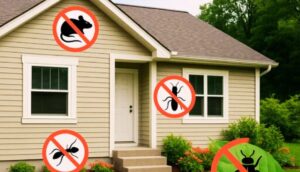
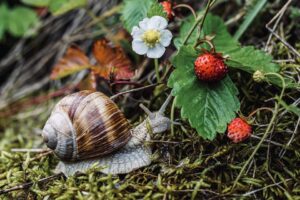

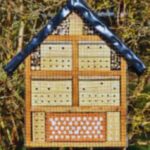
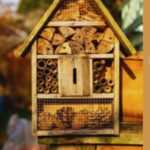


I must admit that this is the first time I have heard of a bug hotel. I also didn’t realize how many useful insects you could attract to your garden by having one of these contraptions. I also didn’t know that solitary bees would be attracted to something like this, which would be wonderful. Does one have to make them or can one purchase the structure from somewhere?
You can make these houses as well, but the purchased ones seem to do better based on the material and all that is added to preserve it. However, be on the lookout for my next article, as I will be discussing how to make your very own insect hotel.